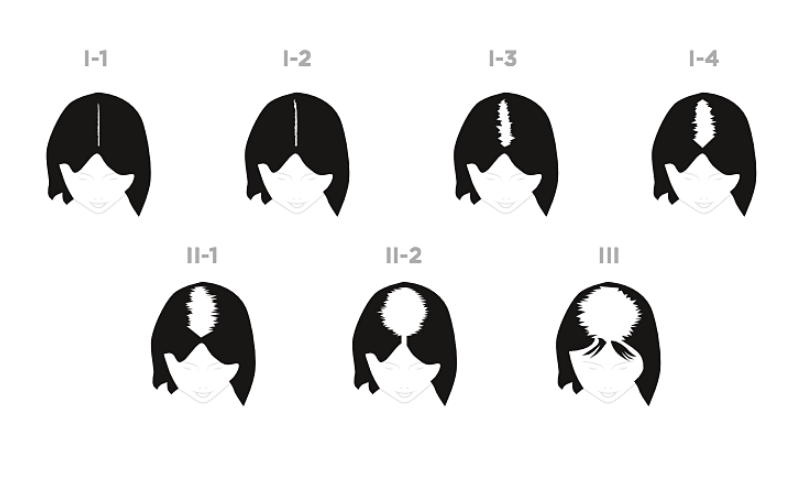Women’s Hair Loss
Get the Facts About Women’s Hair Loss
Hair is simple in structure, but has important functions in social functioning, and the FUE Doctors are experts in this field.
Hair loss treatment for women
Female hair loss is an increasing problem in society today affecting 40% of the female population. It is particularly devastating for women, as hair is a major source of beauty and self esteem.
It can be seen as a gradual thinning on the top and sides or an abnormal amount of shedding from the entire scalp, or bald patches and breakage. For many women this can start in their 20s and 30s and can continue into menopausal years, with white dots at the scalp end of the hair.
Hair loss and thinning in women can be caused by a wide number of factors. These include everything from reaction to medication, poor health, an improper diet, nutritional deficiencies, glucose intolerance, thyroid diseases, auto-immune diseases, chemotherapy to hormonal imbalances, menopause, genetics, exposure to chemicals, surgery, stress, incorrect contraceptive pills, and PCOS (Polycystic Ovarian Syndrome). Hereditary hair thinning accounts for most cases of hair loss.
The Ludwig Scale for Female Baldness
Hereditary Hair Thinning
This condition, triggered by a combination of hormonal activity and genetics, can start in the teens, 20’s, 30’s or 40’s. Over time, this leads to a shortening of the hair’s growth cycle until there is little hair growth at all.
There are three distinct stages of Female Pattern Hair Loss, identified in the Ludwig scale. Ludwig I is the beginning of visible hair loss, Ludwig II shows the hair receding in an oval-shaped pattern. Ludwig III shows the most severe receding pattern.
What is DHT?
Testosterone converts to DHT with the aid of the enzyme Type II 5-alpha reductase, which is held in a hair follicle’s oil glands. Scientists now believe that it’s not the amount of circulating testosterone that’s the problem but the level of DHT binding to receptors in scalp follicles. DHT shrinks hair follicles, making it impossible for healthy hair to survive.
The hormonal process of testosterone converting to DHT, which then harms hair follicles, happens in both men and women. Under normal conditions, women have a minute fraction of the level of testosterone that men have, but even a lower level can cause DHT-triggered hair loss in women; and certainly when those levels rise, DHT is even more of a problem. Those levels can rise and still be within what doctors consider “normal” on a blood test, even though they are high enough to cause a problem. The levels may not rise at all and still be a problem if you have the kind of body chemistry that is overly sensitive to even it’s regular levels of chemicals, including hormones.
Since hormones operate in the healthiest manner when they are in a delicate balance, the androgens, as male hormones are called, do not need to be raised to trigger a problem. Their counterpart female hormones, when lowered, give an edge to these androgens, such as DHT. Such an imbalance can also cause problems, including hair loss.
Hormones are cyclical. Testosterone levels in some men drop by 10 percent each decade after thirty. Women’s hormone levels decline as menopause approaches and drop sharply during menopause and beyond. The cyclic nature of both our hair and hormones is one reason hair loss can increase in the short term, even when you are experiencing a long-term slowdown of hair loss (and a long-term increase in hair growth) while on a treatment that controls hair loss.
What are my options?
Hair Transplantation – Using Neograft, a surgical procedure offering a permanent solution for the right candidate
Laser Therapy – to stimulate hair growth
Factor 4 – growth serum treatment
PRP Platelet Rich Plasma – the latest technique to stimulate hair growth using your own blood
Medication, Treatments & Products – supplements, shampoos, hair stimulants and herbal alternatives will revitalize the hair
Hair Thickeners & Concealers – can quickly and easily camouflage your thinning hair
Hair loss and hair growth can be a very gradual process – recommended treatments usually need to be continued for several months or more before success can be achieved.

